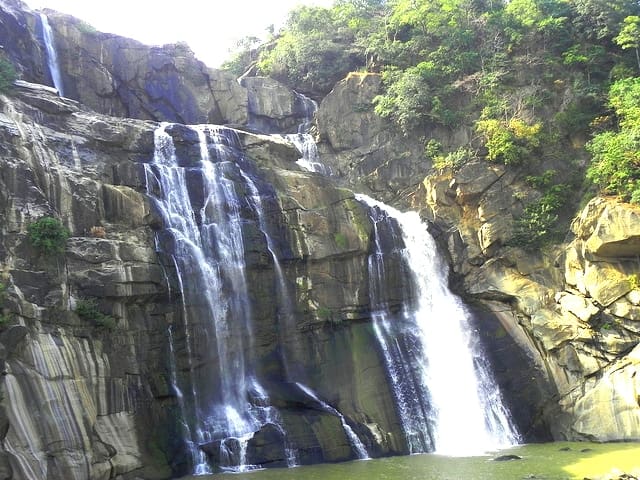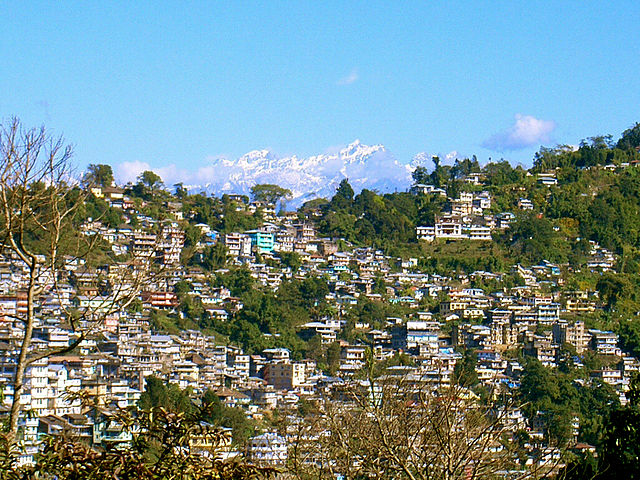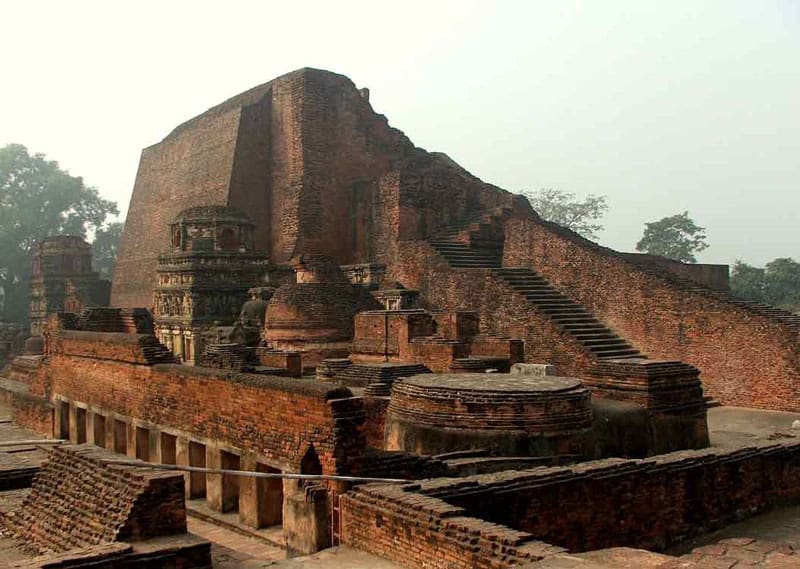Gangtok, the charming capital city of Sikkim, India, is a treasure trove of natural beauty, rich culture, and spiritual sanctuaries. Nestled amidst the majestic Himalayas at an altitude of 1,650 meters, Gangtok beckons travelers with its panoramic vistas, serene monasteries, and vibrant markets. Here’s an in-depth exploration of the top 10 places to visit in Gangtok to ensure an unforgettable experience:
1. Tsomgo Lake
A Serene Himalayan Gem
Tsomgo Lake, also known as Changu Lake, is a glacial lake situated approximately 40 kilometers from Gangtok. Enveloped by towering mountains and adorned with vibrant rhododendron blooms during spring, Tsomgo Lake captivates visitors with its ethereal beauty. The crystal-clear waters of the lake reflect the azure sky, creating a picture-perfect setting.
Things to Do:
- Leisurely Stroll: Take a leisurely stroll along the picturesque lakeshore, soaking in the tranquility of the surroundings.
- Yak Rides: Experience the thrill of riding on a yak, a traditional Himalayan beast of burden, around the lake perimeter.
- Visit Baba Mandir: Pay homage at the nearby Baba Harbhajan Singh Mandir, a revered shrine dedicated to an Indian army soldier.
Best Time to Visit:
The best time to visit Tsomgo Lake is from March to May, when the weather is pleasant, and the lake is free from ice, offering mesmerizing reflections.
2. Nathula Pass
Gateway to Tibet
Nathula Pass, situated at an altitude of 4,310 meters, is a historic mountain pass that once served as a vital trade route between India and Tibet. Today, it stands as a symbol of peace and friendship between the two nations, offering breathtaking views of the snow-clad Himalayan peaks and verdant valleys below.
Things to Do:
- Indo-China Border: Witness the Indo-China border firsthand, marked by barbed wire fences and military outposts.
- War Memorial: Pay tribute to the brave Indian soldiers who sacrificed their lives defending the nation at the Nathula Pass War Memorial.
- Highest Cafeteria: Enjoy a cup of steaming hot tea or delicious snacks at the highest cafeteria in the world, offering panoramic views of the surrounding landscape.
Best Time to Visit:
Nathula Pass is open to tourists from May to November, subject to weather conditions and permits, making the summer and early autumn months ideal for exploration.
3. Rumtek Monastery
Spiritual Oasis
Rumtek Monastery, also known as the Dharma Chakra Centre, is a revered Buddhist monastery located approximately 23 kilometers from Gangtok. Built in the 16th century by the ninth Karmapa, it serves as the main seat of the Karma Kagyu lineage of Tibetan Buddhism outside Tibet.
Things to Do:
- Prayer Ceremonies: Attend traditional prayer ceremonies conducted by the resident monks, accompanied by chanting and rituals.
- Exploration: Explore the monastery’s intricate architecture, adorned with vibrant murals, ancient scriptures, and sacred relics.
- Golden Stupa: Pay homage at the Golden Stupa, a magnificent structure housing relics of the 16th Karmapa.
Best Time to Visit:
Rumtek Monastery welcomes visitors throughout the year, but the months from March to June offer pleasant weather for exploration and photography.
4. Enchey Monastery
The Abode of Solitude
Enchey Monastery, perched atop a hill overlooking Gangtok, exudes an aura of tranquility and spiritual fervor. Believed to be over 200 years old, this ancient monastery is dedicated to the worship of deities and spirits, attracting pilgrims and tourists alike.
Things to Do:
- Cham Dance Festival: Witness the annual Cham dance festival held at the monastery, featuring colorful masked dances and religious rituals.
- Blessings: Seek blessings from the resident monks and lamas, who offer prayers for the well-being of visitors.
- Sunset Views: Capture mesmerizing sunset views from the monastery’s vantage points, overlooking the Gangtok valley.
Best Time to Visit:
Enchey Monastery is accessible year-round, with the months from September to December offering clear skies and pleasant weather for sightseeing.
5. Ganesh Tok
Panoramic Vistas
Ganesh Tok, a small temple dedicated to Lord Ganesh, offers panoramic views of the Gangtok cityscape and the surrounding mountains. Perched atop a hill at an altitude of 6,500 feet, this viewpoint is a popular destination for nature lovers and photographers.
Things to Do:
- Sunrise and Sunset: Admire the breathtaking views of sunrise and sunset, casting hues of gold and crimson over the landscape.
- Temple Visit: Offer prayers at the Ganesh temple, dedicated to the Hindu deity of wisdom and prosperity.
- Himalayan Zoological Park: Visit the nearby Himalayan Zoological Park to witness rare Himalayan wildlife, including the red panda and snow leopard.
Best Time to Visit:
Ganesh Tok is accessible year-round, but the months from October to February offer clearer skies and better visibility for panoramic views.
6. Hanuman Tok
Divine Solace
Hanuman Tok, another revered temple dedicated to Lord Hanuman, is situated at an altitude of 7,200 feet, offering stunning views of the Gangtok valley. Apart from its religious significance, the temple provides a serene ambiance for meditation and contemplation.
Things to Do:
- Prayer and Meditation: Offer prayers and meditate in the tranquil surroundings of the temple complex, surrounded by lush greenery.
- Nature Trails: Explore the nature trails surrounding Hanuman Tok, which offer glimpses of local flora and fauna.
- Picnic Spot: Enjoy a picnic with family and friends amidst breathtaking views of the Himalayas and the Gangtok skyline.
Best Time to Visit:
Hanuman Tok can be visited throughout the year, but the months from March to May offer pleasant weather for outdoor activities and sightseeing.
7. Do Drul Chorten
Spiritual Enclave
Do Drul Chorten, a revered stupa built in 1945, is adorned with intricate Buddhist carvings and prayer wheels. Surrounded by lush greenery and fluttering prayer flags, this sacred site is a haven for spiritual seekers and devotees.
Things to Do:
- Prayer Circumambulation: Circumambulate the stupa while spinning prayer wheels, invoking blessings and good fortune.
- Monastic Chants: Witness monks chanting prayers and performing rituals in the serene ambiance of the stupa complex.
- Namgyal Institute of Tibetology: Explore the nearby Namgyal Institute of Tibetology, which houses a vast collection of Tibetan artifacts, manuscripts, and thangka paintings.
Best Time to Visit:
Do Drul Chorten welcomes visitors year-round, but the months from October to March offer cooler temperatures and clearer skies for exploration.
8. Himalayan Zoological Park
Wildlife Wonderland
Himalayan Zoological Park, sprawled over 230 hectares of lush forested area, is a sanctuary for diverse Himalayan fauna. Home to rare and endangered species such as the red panda, Himalayan black bear, and snow leopard, the park offers immersive wildlife experiences.
Things to Do:
- Guided Safaris: Embark on guided safaris through the park to spot elusive Himalayan wildlife in their natural habitat.
- Fauna Breeding Center: Visit the Himalayan fauna breeding center within the park, which plays a crucial role in conservation efforts.
- Nature Trails: Explore the nature trails within the park, offering opportunities for birdwatching and photography amidst pristine surroundings.
Best Time to Visit:
Himalayan Zoological Park is open year-round, but the months from March to May offer the best chances of spotting wildlife due to favorable weather conditions.
9. Bakthang Waterfall
Nature’s Symphony
Bakthang Waterfall, cascading down a rocky cliff amidst dense forests, is a testament to the raw beauty of nature. The melodious sound of gushing water and the verdant surroundings create a serene ambiance, making it a popular spot for nature lovers and photographers.
Things to Do:
- Photography: Capture stunning photographs of the waterfall against the backdrop of lush greenery and moss-covered rocks.
- Picnic: Enjoy a picnic with family and friends by the waterfall, immersing yourself in the sights and sounds of nature.
- Refreshing Dip: Take a refreshing dip in the natural pool formed by the waterfall, rejuvenating your senses amidst the tranquil surroundings.
Best Time to Visit:
Bakthang Waterfall is most spectacular during the monsoon season, from June to September, when it is in full flow, offering a mesmerizing spectacle of nature’s power and beauty.
10. Tashi Viewpoint
Panoramic Panache
Tashi Viewpoint, located 8 kilometers from Gangtok, offers sweeping views of the snow-capped peaks of the Himalayas. Perched atop a hill, this viewpoint provides an ideal vantage point to witness the mesmerizing play of colors during sunrise and sunset, painting the sky in hues of orange and pink.
Things to Do:
- Sunrise and Sunset Views: Capture mesmerizing views of sunrise and sunset, casting a magical glow over the Himalayan landscape.
- Viewpoint Café: Enjoy a cup of hot tea or coffee from the viewpoint café, while soaking in the breathtaking vistas spread out before you.
- Souvenir Shopping: Shop for souvenirs and handicrafts from local vendors at the viewpoint, including traditional Sikkimese artifacts and clothing.
Best Time to Visit:
Tashi Viewpoint can be visited year-round, but the months from October to December offer clearer views due to minimal cloud cover, ensuring unobstructed vistas of the majestic Himalayas.
Conclusion
Gangtok, with its unparalleled natural beauty, cultural richness, and spiritual significance, is a destination like no other. Whether you’re seeking adventure amidst the Himalayan peaks, solace in ancient monasteries, or simply wish to immerse yourself in the tranquility of nature, Gangtok has something to offer for every traveler. Plan your trip to this enchanting Himalayan city and embark on a journey of discovery, exploration, and unforgettable experiences.
Frequently Asked Questions (FAQs)
1. What is the best time to visit Gangtok?
- The best time to visit Gangtok is during the spring (March to May) and autumn (October to November) seasons when the weather is pleasant, and the skies are clear, offering stunning views of the Himalayas.
2. Do I need a permit to visit Nathula Pass?
- Yes, tourists require a special permit issued by the Sikkim Tourism Department to visit Nathula Pass due to its proximity to the Indo-China border. Permits can be obtained through registered tour operators or directly from the tourism office in Gangtok.
3. Are there any trekking opportunities in Gangtok?
- Yes, Gangtok and its surrounding areas offer numerous trekking trails catering to various difficulty levels. Popular treks include the Dzongri Trek, Goechala Trek, and the Singalila Ridge Trek, which offer breathtaking views of the Himalayan landscape.
4. Is Gangtok a safe destination for solo travelers?
- Yes, Gangtok is considered a relatively safe destination for solo travelers. However, it’s advisable to take necessary precautions, such as avoiding isolated areas at night and keeping belongings secure while exploring the city.
5. What is the local cuisine of Gangtok?
- The local cuisine of Gangtok is influenced by Tibetan, Nepalese, and Sikkimese flavors. Some must-try dishes include momos (steamed dumplings), thukpa (noodle soup), phagshapa (pork stew), and sel roti (fried rice bread).
6. How do I reach Gangtok from Bagdogra Airport?
- Bagdogra Airport, located near Siliguri in West Bengal, is the nearest airport to Gangtok. From Bagdogra, travelers can hire a pre-paid taxi or take a shared cab to Gangtok, which is approximately a 4 to 5-hour drive depending on road conditions.
7. Can I use public transport to explore Gangtok?
- Yes, Gangtok has a well-developed public transport system comprising buses, shared taxis, and auto-rickshaws. However, hiring a private vehicle or taxi is more convenient for exploring the city and nearby attractions at your own pace.
8. Are there any adventure sports activities available in Gangtok?
- Yes, Gangtok offers a range of adventure sports activities, including river rafting in the Teesta River, paragliding at various viewpoints, mountain biking on scenic trails, and yak safari near Tsomgo Lake.
9. What clothing should I pack for my trip to Gangtok?
- It’s advisable to pack warm clothing, including jackets, sweaters, and shawls, especially if you’re visiting during the winter months when temperatures can drop significantly. Additionally, comfortable walking shoes and rain gear are essential for exploring the city and its surrounding areas.
10. Are credit cards widely accepted in Gangtok?
- While some hotels, restaurants, and larger establishments may accept credit cards, it’s advisable to carry sufficient cash, especially when visiting local markets and smaller shops. ATMs are available in Gangtok for cash withdrawals, but it’s recommended to carry cash in smaller denominations for convenience.











